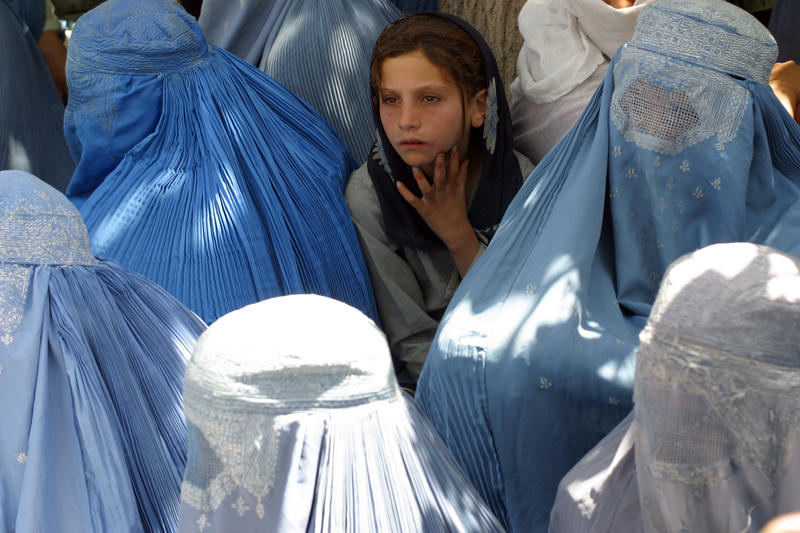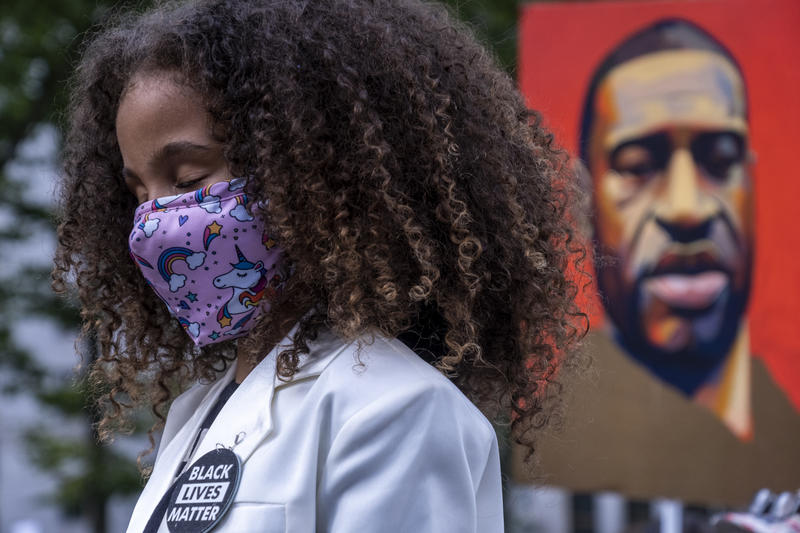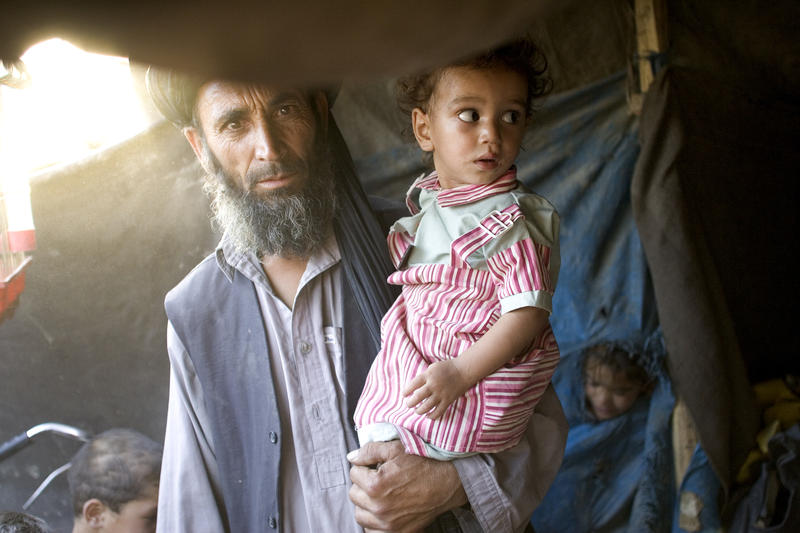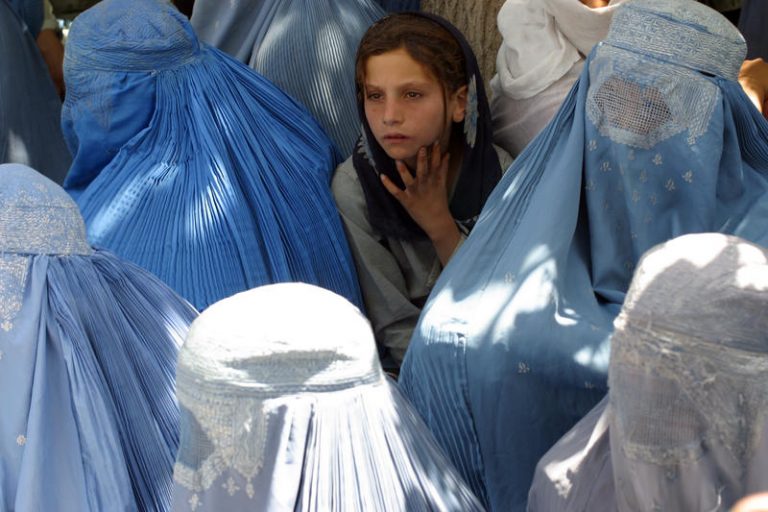
By Roland Bleiker, Bronte Bratton, Tiffany Hales, Emma Hutchison
Images are everywhere. Their power is well recognised. And so is the recognition that the production and distribution of conversation-changing images is no longer the reserve of photojournalists and newspapers. Anyone with access to a smartphone can instantaneously snap, share, and circulate images around the world. Indeed, the much-discussed video-clip of the police-murder of George Floyd was not taken by a prize-winning photojournalist, nor was it captured with a Nikon or Canon. It was an every-day phone clip that became a symbol of the Black Lives Matter movement, propelling protests and police reforms across the US.
In a recent VII Insider blog, David Campbell highlights the difficulty of understanding how such images affect opinion, policy and action. Whilst many claim pictures change the world, Campbell argues that designating a linear and causal relationship between images and policy undercuts a more complex process. The issue, Campbell suggests, ‘is best approached through the concept of impact.’ Impact analysis provides a key mechanism through which we can understand the potency of images and gain a more comprehensive understanding of ‘how change requires more than attention and exposure.’
We address Campbell’s challenge by exploring the potentials and limits of a particular way of understanding the impact of images: survey experiments that examine the so-called ‘identifiable victim effect.’ These studies reveal that visual depictions of identifiable victims tend to elicit more sympathy, humanitarian philanthropy and social action compared to statistical victims. When viewers see a victim – and know their name and story – they tend to feel more connected to that person. However, this effect decreases as more individuals are added to a visual story. For instance, one survey experiment found that a photograph of multiple sick children evoked less sympathy and compassion compared to when a single child was depicted.

The key point we make in this blog is that such survey experiments offer important insights into the impact of images. Even though survey experiments are often small-scale and focus on individuals, they can considerably add to our understanding of how images shape political attitudes and dynamics.
The identifiable victim effect makes sense at an intuitive level. Statistics are often difficult to understand, especially when it comes to a major crisis. They often make readers and viewers feel disconnected from the reality of the situation. Scott Slovic and Paul Slovic address this issue in a collection of essays called Numbers and Nerves. They explore the quandary that while numbers are often used to describe large-scale crises, these very ‘numbers are precisely the mode of discourse that, in most cases, leaves audiences numb and messages devoid of meaning.’

Here are two recent examples.
First: with the ubiquity of numbers and statistics in today’s globalised world – COVID cases, starvation rates, earthquake, tsunami and bushfire victims – it is easy to forget the lives behind the never-ending stream of digits. We are flooded with statistics about the vast numbers of people around the world in crisis situations. Most viewers – and especially those in a position of privilege – digest this daily stream of news at a distance, often with an accompanying sentiment of ‘that could never happen here.’
COVID victims are a case in point. We are presented almost daily with increasing case numbers, hospitalisations, and deaths (even as many falsely declare the pandemic over). However, as Lynsey Addario already pointed out at the beginning of the pandemic, visual depictions of individual COVID victims are relatively rare. News features tend to show masked doctors in clean, fresh scrubs and stock images of syringes labelled ‘COVID-19 vaccine.’
The victims of the pandemic – like so many other crises – have struggled to have their humanity represented. They seem to drown in a sea of daily statistics. (Cf. Tanvi Mishra’s article for VII Insider on how India’s COVID crisis was photographed).

Second is a reverse example: how visual depictions of people drew attention to the crisis that unfolded in August 2021, when the Taliban took over Kabul. Tens of thousands of people were trying to flee Afghanistan. Photos of the surging crowds at Kabul airport flooded social media and were printed on the front page of newspapers across the world. Particularly arresting were photographs and film clips of individuals, whose visible facial expressions were a window into the desperation felt by the Afghan population.
Consider the widely shared video footage of two bodies falling from a plane as it flew south over Kabul. Published stills from the footage immediately evoked comparisons to the famous ‘Falling Man,’ photographed plunging from the Twin Towers during the terrorist attacks of September 11, 2001. The faces of these two victims couldn’t be seen. In the images, their bodies appeared to be mere specks in the sky. However, importantly, they were later identified as 17-year-old football player Zaki Anwari and 24-year-old dentist Fada Mohammed. Portraits of Anwari and Mohammed were subsequently published in several news outlets, providing them with an identity that evoked emotions in a way that statistics could not.
Studies that explore this identifiable victim effect do so primarily through survey experiments and are located in fields such as social psychology and marketing. Even though relatively small in scale, these studies can offer us important insights into the impact of images and visual stories. They show how images can evoke compassion in viewers and shape their attitude towards victims of crises.
For instance, several studies have demonstrated how images of identifiable victims significantly increase the ability of humanitarian organisations to raise funds. Donors – especially those giving for the first time – are more likely to contribute to a campaign if they perceive they are supporting a particular individual. Research in the psychology of donation behaviour has similarly found that those who were exposed to an image of an identifiable victim donated roughly 25% more than those who were not. In this way, generating awareness and momentum for an issue requires a ‘posterchild’: an identifiable victim that can stand in for the whole group to foster sympathy and support.
How such images of identifiable victims mobilise compassion, support and solidarity has been the subject of much research. Findings in psychological research indicate that visualisations are able to illuminate distant crises, as images of identifiable victims force viewers to confront the lived reality of humanitarian crises abroad. They can diminish the psychological distance between victims and audiences. Identifying information about a victim – including visual information – is particularly important, because they render the subject more human and vivid in the eyes of audiences. This re-humanization enhances viewers’ feelings of connectedness and distress, despite spatial and social distance.
At the same time, further research found that other factors can mediate the impact of images. For instance, an audience’s sympathetic response tends to diminish when an image of an identifiable victim is combined with statistical data. Whereas information about identified victims is processed affectively, statistics trigger stronger deliberative processing that renders the identifiable victim effect less effective. Daniel Västfjäll, Paul Slovic and Marcus Mayorga offer one potential explanation: when confronted with statistics people are deterred from helping the identified victim because doing so seems ineffective. When statistics of mass suffering accompany an image of one person’s distress, helping an individual becomes just a ‘drop in the ocean.’ This is why some researchers suggest that humanitarian campaigns should focus on individuals, rather than the overall crises, which could easily overwhelm viewers.
Moreover, not every image of an identified individual induces the same level of sympathy. Just as identifiable victim images from the Taliban takeover evoked compassion, the same images also incited Islamophobic reactions. Similarly, the same image of George Floyd that ignited months of protests and triggered police reforms across the US was also met with disdain by others. Central here, several studies suggest, are issues of framing and, in particular, how race, class, gender, and sexuality can significantly influence how viewers comprehend and react to photographs of identifiable victims. Important as well is whether a victim is perceived as innocent or responsible for their plight.
In sum: studies on the identifiable victim effect offer us valuable insights about how images shape the attitudes and behaviour of individuals. They reveal not only what viewers will see but also what they might feel and how those feelings shape their perceptions, attitudes and behaviour. This is why experiments on the identifiable victim effect have the potential to provide humanitarian organisations, photographers or newspaper editors with concrete knowledge about the impact that their visual stories might have.
But there are also inevitable limits to survey studies. Images always need to be interpreted. They acquire meaning only in relation to their political context. Moreover, experiments only measure the attitudes and behaviours of individuals and, important as this may be, only capture one dimension of visual politics.
Images shape politics in complex ways and in ways that go beyond the impact on individuals. Images reveal and conceal the word around us and, in doing so, influence what we can conceptually and emotionally experience. In this sense, images make certain political discourses possible and foreclose others. For instance, the kind of de-humanising images we often see of refugees – masses arriving on boats or lining up in front of food banks – tend to feed into political discourses that depict refugees as a security threat, rather than as a humanitarian responsibility.
These and many other visual political dynamics cannot be understood alone through survey experiments. Images traverse political spheres in ways that allow them to influence us – as individuals and as collectives – in subtle and gradual ways. Studies on the identifiable victim effect can provide crucial insights into how individuals react to images and how these reactions shape their behaviour. But other approaches to understanding images need to be employed to fully understand their impact. These methods range from ethnographies and interviews to discourse- and content-analyses. Taken together, these multiple ways of knowing can offer a better appreciation of how images both represent and enact the world around us and the people in it.
AUTHORS
Roland Bleiker is Professor of International Relations at the University of Queensland, where he coordinates a Research Program on Visual Politics. His most recent book is Visual Global Politics (Routledge 2018) and his is the lead-investigator in a collaborative and interdisciplinary project that examines the politics and ethics of Visualising Humanitarian Crises, funded by the Australian Research Council (2022-2026).
Bronte Bratton is a fourth year student from the University of Queensland, studying for a Bachelor of Arts and Bachelor of Social Science, specialising in International Relations, Gender studies and Development. She is currently working in the field of development and social assessment as an undergraduate social planner. Her interests include creating more inclusive development processes, digital storytelling, gender politics and environmental policy.
Tiffany Hales recently graduated from the University of Queensland with a Bachelor of Arts and Bachelor of Social Science, majoring in International Relations and Development. She is currently preparing for postgraduate studies in this area. Her research interests include human rights, humanitarian affairs, and gender-based violence.
Emma Hutchison is Associate Professor of International Relations and an Australian Research Council DECRA Fellow at the University of Queensland. Her work focuses on emotions and trauma in world politics, particularly in relation to security and humanitarianism. Her book Affective Communities in World Politics: Collective Emotions After Trauma (CUP 2016/18) was awarded the BISA Susan Strange Book Prize and the ISA Theory Section Best Book Award.
ACKNOWLEDGEMENT
We would like to acknowledge that our collaboration has been generously supported by the University of Queensland’s Summer Research Program and the School of Political Science and International Studies. The study is part of a larger project on Visualising Humanitarian Crises, funded by the Australian Research Council (2022-2026).
RELATED ARTICLES
This article is part of a series that includes:
The Impact of Images, Part I: How To Think About the Issue
The Impact of Images, Part III: Making Visible Is Not Enough
